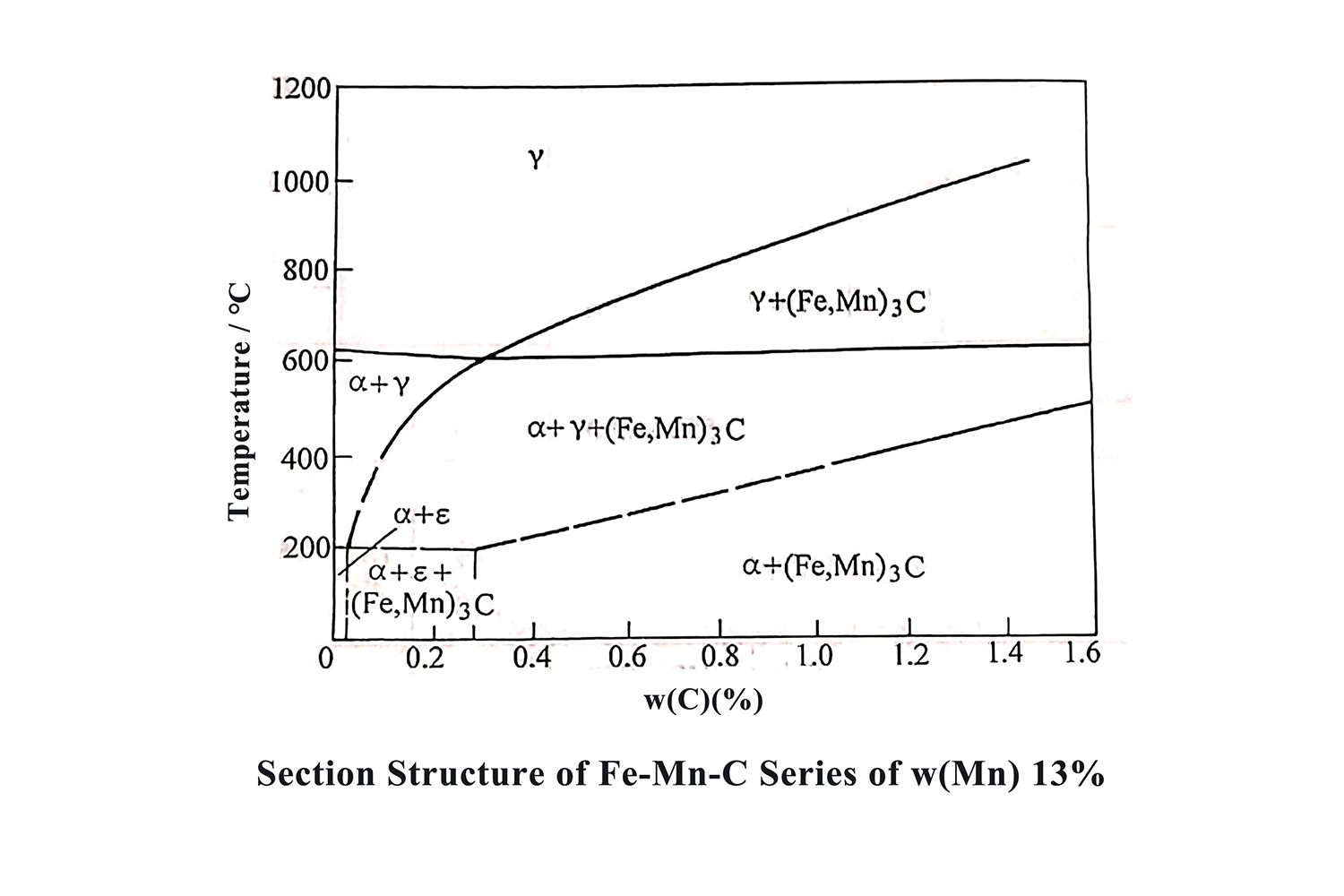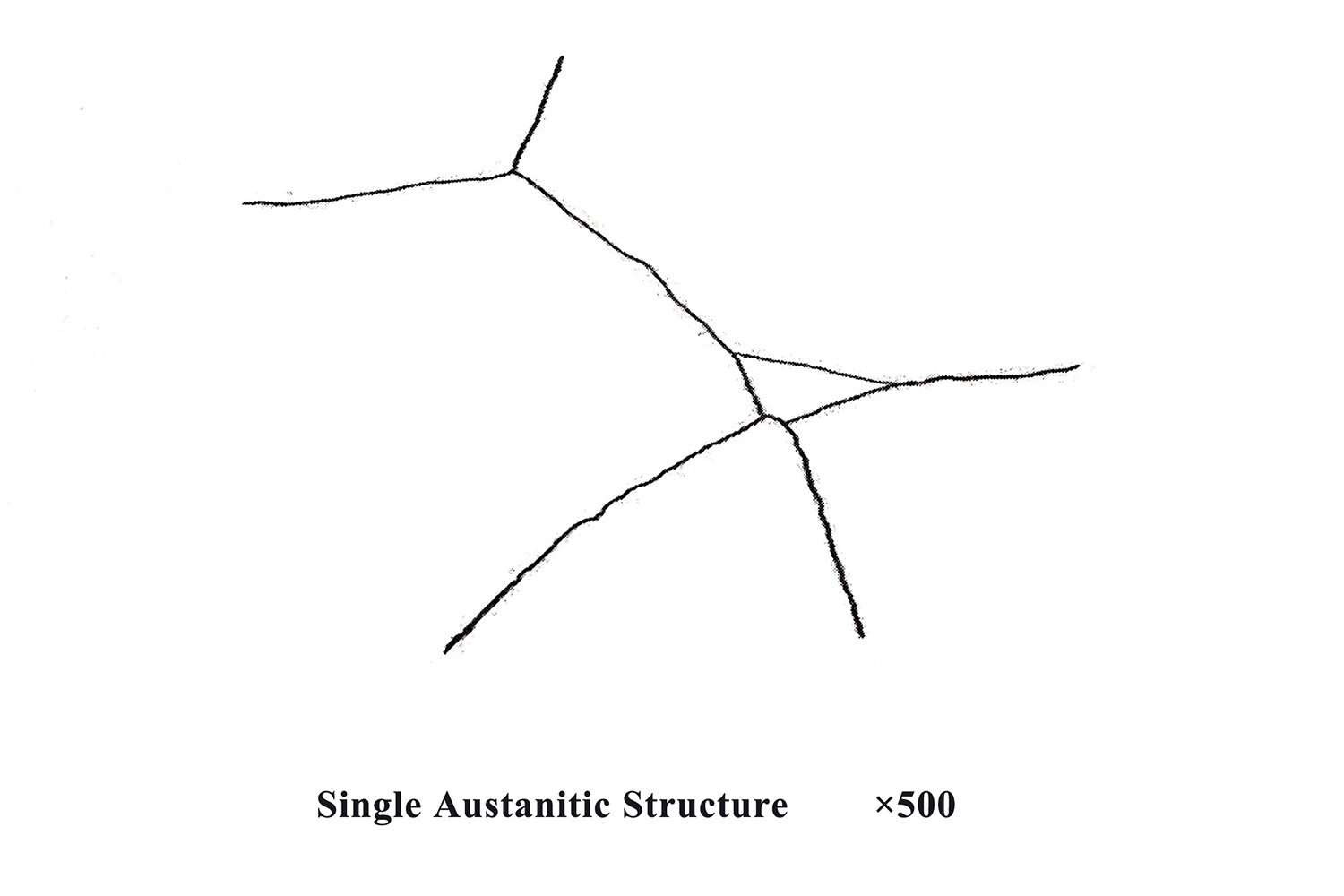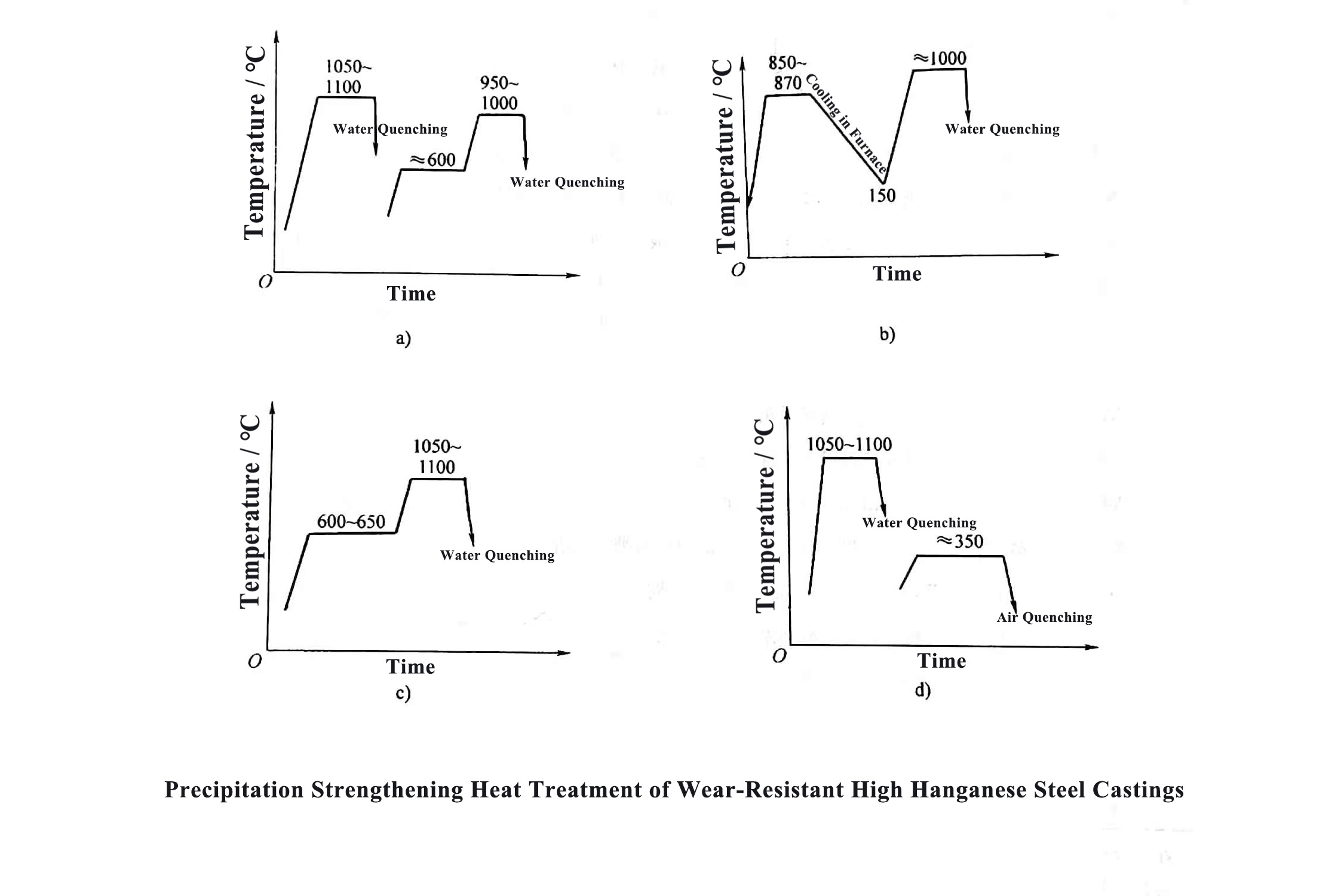Wear-resistant (or abrasion-resistant) cast steel refers to cast steel with good wear resistance. According to chemical composition, it is divided into non-alloy, low-alloy and alloy wear-resistant cast steel. There are many types of wear-resistant steel, which can be roughly divided into high-manganese steel, medium and low-alloy wear-resistant steel, chromium-molybdenum-silicon-manganese steel, cavitation-resistant steel, wear-resistant steel, and special wear-resistant steel. Some general alloy steels such as stainless steel, bearing steel, alloy tool steel and alloy structural steel are also used as wear-resistant steel under specific conditions.
Medium and low-alloy wear-resistant steels usually contain chemical elements such as silicon, manganese, chromium, molybdenum, vanadium, tungsten, nickel, titanium, boron, copper, rare earths, etc. The liners of many large and medium-sized ball mills in the United States are made of chromium-molybdenum-silico-manganese or chromium-molybdenum steel. Most of the grinding balls in the United States are made of medium and high carbon chromium molybdenum steel. For workpieces that work under relatively high temperature (for example, 200~500℃) abrasive wear conditions or whose surfaces are subjected to relatively high temperatures due to frictional heat, alloys such as chromium molybdenum vanadium, chromium molybdenum vanadium nickel or chromium molybdenum vanadium tungsten can be used.
Abrasion is a phenomenon in which the material on the working surface of an object is continuously destroyed or lost in relative motion. Divided by the wear mechanism, wear can be divided into abrasive wear, adhesive wear, corrosion wear, erosion wear, contact fatigue wear, impact wear, fretting wear and other categories. In the industrial field, abrasive wear and adhesive wear account for the largest proportion of workpiece wear failures, and wear failure modes such as erosion, corrosion, fatigue, and fretting tend to occur in the operation of some important components, so they are getting more and more attention. Under working conditions, several forms of wear often appear at the same time or one after another, and the interaction of wear failure takes on a more complex form. Determining the type of wear failure of the workpiece is the basis for the reasonable selection or development of wear-resistant steel.
In addition, the wear of parts and components is a system engineering problem. There are many factors that affect wear, including working conditions (load, speed, movement mode), lubrication conditions, environmental factors (humidity, temperature, surrounding media, etc.), and material factors ( Composition, organization, mechanical properties), surface quality and physical and chemical properties of parts. Changes in each of these factors may change the amount of wear and even change the wear mechanism. It can be seen that the material factor is only one of the factors that affect the wear of the workpiece. To improve the wear resistance of steel parts, it is necessary to start with the overall friction and wear system under specific conditions to achieve the desired effect.
1. Solution Heat Treatment (Water Toughening Treatment) of Wear-Resistant High Manganese Steel Castings
There are a large number of precipitated carbides in the as-cast structure of the wear-resistant high-manganese steel. These carbides will reduce the toughness of the casting and make it easy to fracture during use. The main purpose of solution heat treatment of high manganese steel castings is to eliminate carbides in the as-cast structure and on the grain boundaries to obtain a single-phase austenite structure. This can improve the strength and toughness of high manganese steel, so that high manganese steel castings are suitable for a wider range of fields.
The solution heat treatment of wear-resistant high-manganese steel castings can be roughly divided into several steps: heating the castings to above 1040°C and holding them for an appropriate time, so that the carbides therein are completely dissolved in single-phase austenite; then rapidly cooling , Get austenite solid solution structure. This solution treatment is also called water toughening treatment.
(1) Temperature of water toughening treatment
The water toughness temperature depends on the chemical composition of the high manganese steel, usually 1050℃-1100℃. High manganese steels with high carbon content or high alloy content (such as ZG120Mn13Cr2 steel and ZG120Mn17 steel) should take the upper limit of the water toughness temperature. However, an excessively high water toughness temperature will cause severe decarburization on the surface of the casting and the rapid growth of the high manganese steel grains, which will affect the performance of the high manganese steel.
(2) Heating rate of water toughening treatment
The thermal conductivity of manganese steel is worse than that of general carbon steel. High-manganese steel castings have high stress and are easy to crack when heated, so the heating rate should be determined according to the wall thickness and shape of the casting. Generally speaking, castings with smaller wall thickness and simple structure can be heated at a faster rate; castings with larger wall thickness and complex structure should be heated slowly. In the actual heat treatment process, in order to reduce the deformation or cracking of the casting during the heating process, it is generally heated to about 650℃ to keep the temperature difference between the inside and outside of the casting reduced, and the temperature in the furnace is uniform, and then quickly rise to the water toughness temperature.
(3) Holding time of water toughening treatment
The holding time of water toughening treatment mainly depends on the wall thickness of the casting, in order to ensure the complete dissolution of carbides in the as-cast structure and the homogenization of the austenite structure. Under normal circumstances, it can be calculated by increasing the holding time by 1 hour for every 25 mm increase in wall thickness.
(4) Cooling of water toughening treatment
The cooling process has a great influence on the performance index and structure of the casting. During water toughening treatment, the temperature of the casting before entering the water should be above 950°C to prevent carbides from re-precipitating. For this reason, the time interval between casting out of the furnace and entering the water should not exceed 30 seconds. The water temperature should be below 30°C before the casting enters the water, and the maximum water temperature after entering the water should not exceed 50°C.
(5) Carbide after water toughening treatment
After the water toughening treatment, if the carbides in the high manganese steel are completely eliminated, the metallographic structure obtained at this time is a single austenite structure. But such a structure can only be obtained in thin-walled castings. Generally, a small amount of carbides in the austenite grains or on the grain boundaries are allowed. Undissolved carbides and precipitated carbides can be eliminated by heat treatment again. However, eutectic carbides precipitated due to excessive heating temperature during water toughening treatment are not acceptable. Because the eutectic carbide cannot be eliminated by heat treatment again.
2. Precipitation Strengthening Heat Treatment of Wear-Resistant High Hanganese Steel Castings
Precipitation-strengthening heat treatment of wear-resistant high manganese steel refers to the addition of a certain amount of carbide forming elements (such as molybdenum, tungsten, vanadium, titanium, niobium and chromium) through heat treatment to obtain a certain amount and size in high manganese steel The second phase of the dispersed carbide particles. This heat treatment can strengthen the austenite matrix and improve the wear resistance of high manganese steel.
3. Heat Treatment of Wear-resistant Medium Chromium Steel Castings
The purpose of heat treatment of wear-resistant medium chromium steel castings is to obtain a martensite matrix structure with high strength, toughness and high hardness, so as to improve the strength, toughness and wear resistance of the steel castings.
Wear-resistant medium chromium steel contains more chromium elements and has higher hardenability. Therefore, its usual heat treatment method is: after 950℃-1000℃, its austenitization, then quenching treatment, and timely tempering treatment (usually at 200-300℃).
4. Heat Treatment of Wear-Resistant Low-Alloy Steel Castings
Wear-resistant low-alloy steel castings are treated by quenching in water, quenching in oil and air quenching depending on the alloy composition and carbon content. Pearlitic wear-resistant cast steel adopts normalizing + tempering heat treatment.
In order to obtain a martensite matrix with high strength, toughness and hardness, and to improve the wear resistance of steel castings, wear-resistant low-alloy steel castings are usually quenched at 850-950°C and tempered at 200-300°C.
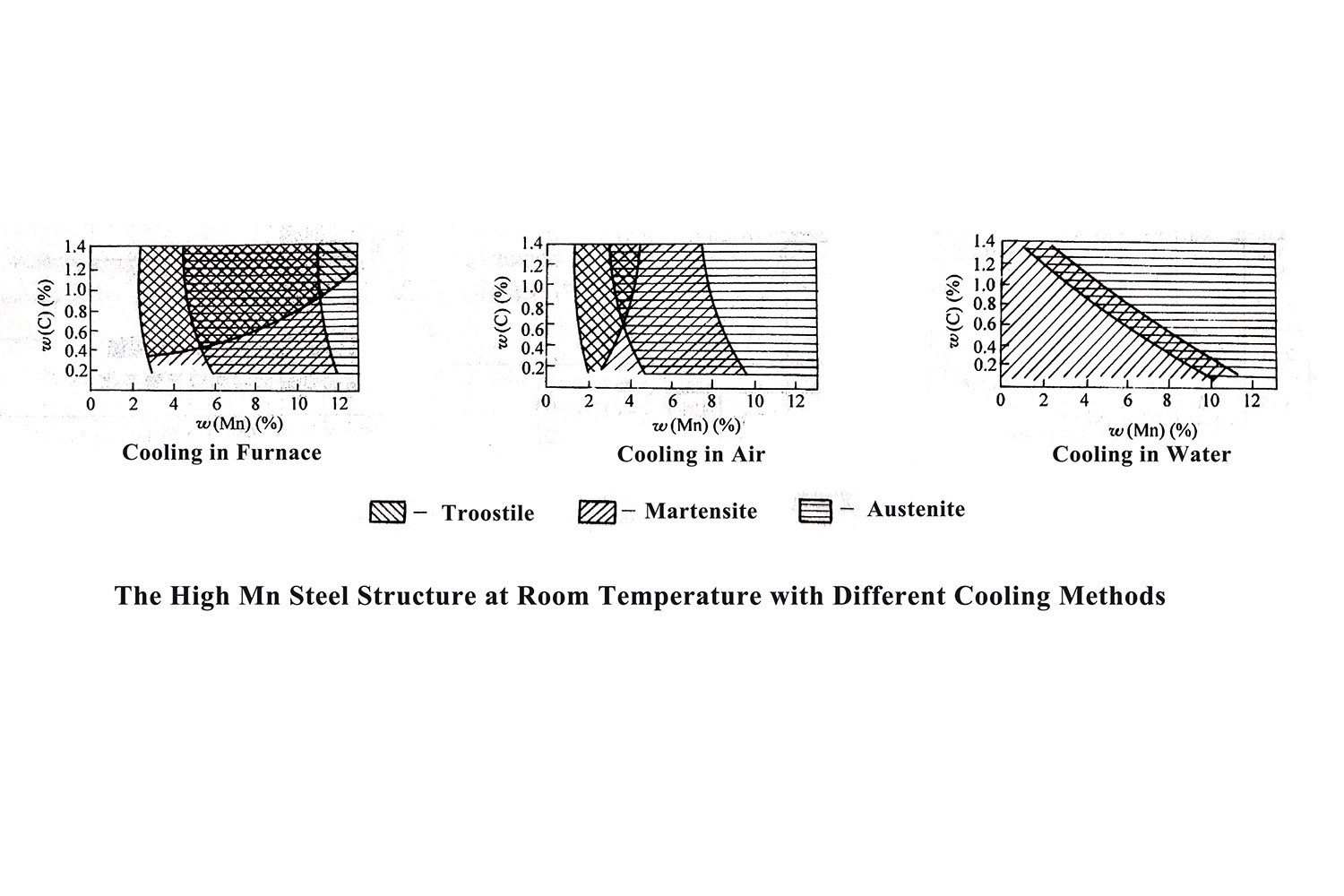
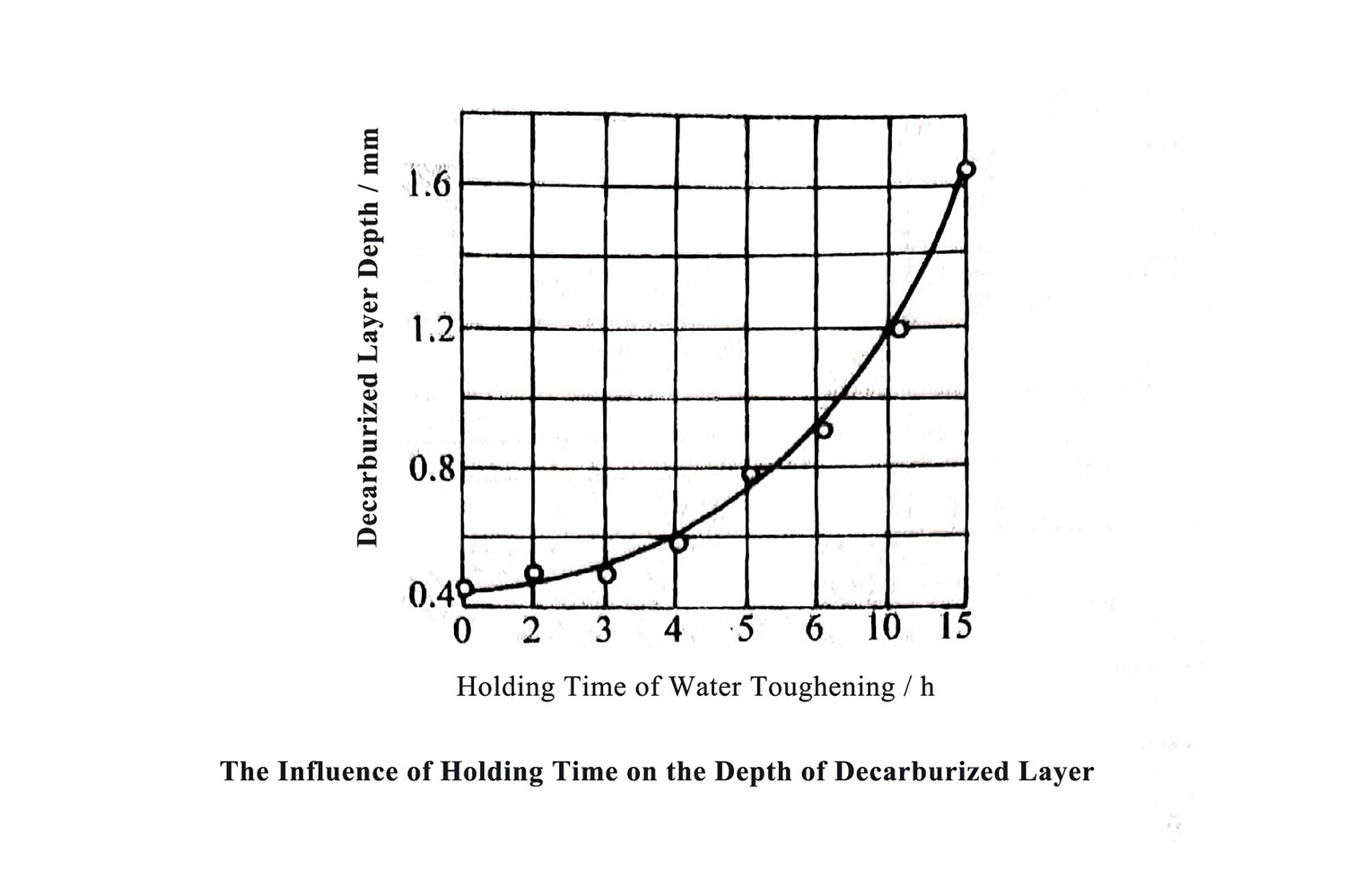
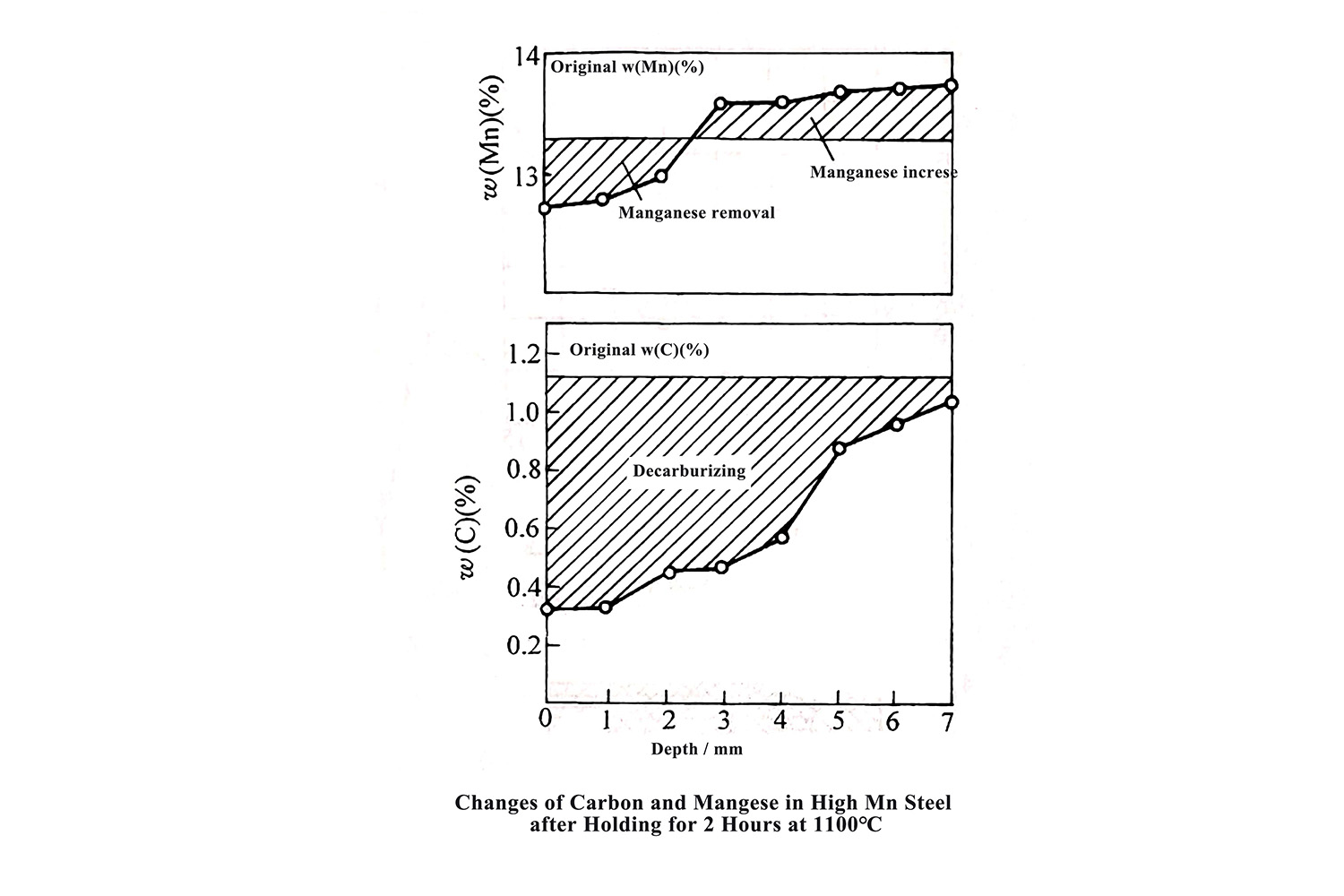
Post time: Aug-07-2021


